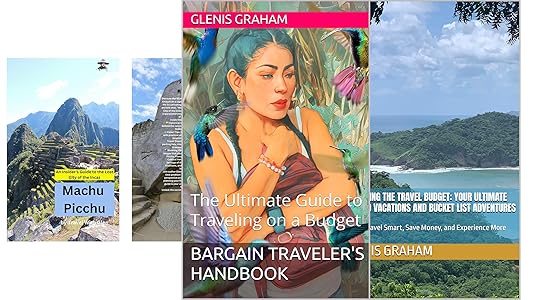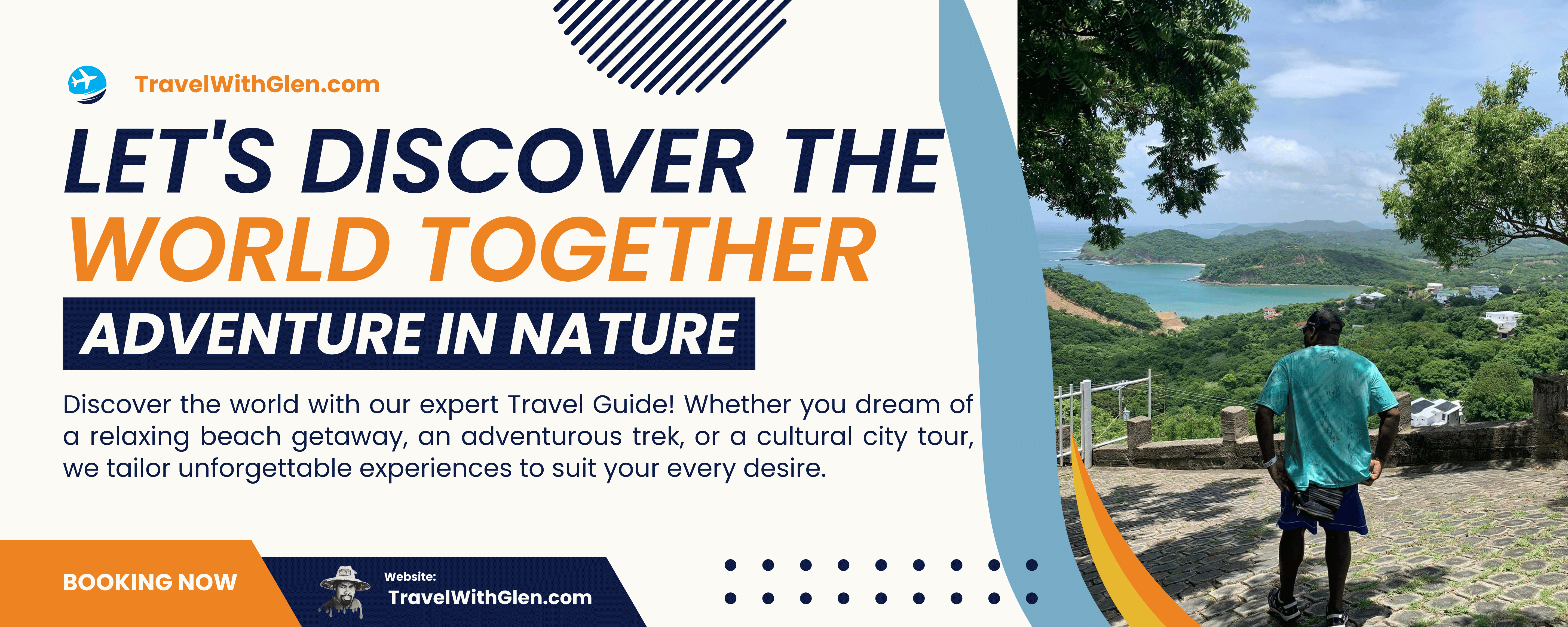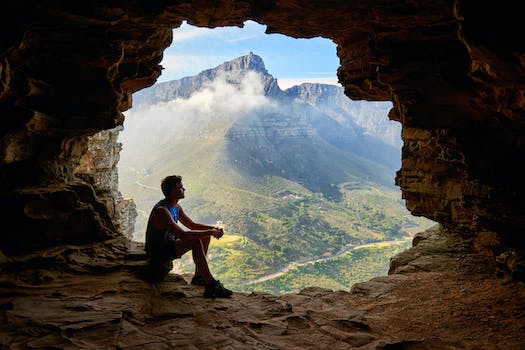Bucket List Adventures: Breathtaking Travel Experiences You Can’t Miss!
Traveling is not just about moving from one place to another; it’s about experiencing new cultures, breathtaking landscapes, and moments that stay with you forever. A bucket list adventure is a perfect way to curate unforgettable experiences that you’ll cherish for a lifetime. From the top of Mount Kilimanjaro to the serene waters of the Greek Islands, this guide will help you plan your travel bucket list and provide you with essential travel tips and insights.
Table of Contents
- Introduction to Bucket List Adventures
- Top Bucket List Adventures You Can’t Miss
- Exploring the World: Travel Tips
- Top Destinations to Explore
- Frequently Asked Questions
- Conclusion
- External Resources
Introduction to Bucket List Adventures
A bucket list represents a set of dreams, goals, and life experiences that individuals hope to achieve during their lifetime. It serves as a source of motivation and inspiration, encouraging people to step out of their comfort zones, embrace adventure, and create unforgettable memories. For many, travel plays a central role in fulfilling bucket list aspirations, as exploring new destinations offers personal growth, excitement, and a deeper appreciation for the world.
Why Create a Bucket List?
Creating a bucket list helps you:
- Visualize Goals – Putting your dreams on paper makes them feel tangible and achievable.
- Stay Motivated – Having clear goals encourages you to take action and prioritize experiences over material possessions.
- Celebrate Achievements – Crossing items off your list brings a sense of fulfillment and joy.
- Build Lifelong Memories – Adventures create stories to share and moments that shape your identity.
Key Features of Bucket List Adventures
When planning your bucket list adventures, focus on experiences that offer:
- Breathtaking Scenery – Natural wonders like the Grand Canyon, Aurora Borealis, and Mount Everest provide awe-inspiring landscapes.
- Cultural Immersion – Destinations rich in heritage, such as Kyoto, Japan, or Marrakech, Morocco, allow travelers to experience traditions, festivals, and cuisines.
- Thrilling Activities – From skydiving in Dubai to scuba diving at the Great Barrier Reef, adrenaline-filled activities bring excitement and adventure.
- Unique Encounters – Opportunities like witnessing wildlife migrations in Africa or visiting remote tribal villages can be deeply transformative.
- Personal Growth – Adventures such as hiking the Inca Trail to Machu Picchu or embarking on a solo journey build confidence and resilience.
How to Start Your Bucket List Adventure
- Brainstorm Ideas – Think about places you’ve always wanted to visit and activities you’ve dreamed of trying.
- Research Destinations – Explore travel blogs, documentaries, and books to find inspiration and practical information.
- Set Priorities – Focus on experiences that resonate most with your passions and interests.
- Plan Your Budget – Create savings goals or look for affordable travel options to make your dreams a reality.
- Take Action – Book your trip, pack your bags, and start checking off your list!
A bucket list adventure is not just about checking off boxes it’s about pushing boundaries, living with intention, and embracing the world’s beauty and diversity. Whether it’s climbing a mountain, witnessing a natural wonder, or tasting exotic dishes, every experience contributes to a richer and more fulfilling life. Start planning today and turn your dreams into reality!
Understanding Bucket List Adventures
A bucket list adventure is more than just a trip it’s a transformative experience that leaves a lasting impact on your life. These adventures often consist of awe-inspiring natural wonders, thrilling activities, and deep cultural immersions that resonate on a personal level. They symbolize dreams and aspirations, pushing you beyond your comfort zone to create unforgettable memories.
Why Do People Create Bucket Lists?
- Fulfillment of Dreams – Many people compile bucket lists to pursue lifelong dreams and desires that often get overlooked in daily routines.
- Personal Growth – Traveling to new places and engaging in unique activities challenges you, helping to build confidence and resilience.
- Connection with Nature and Culture – These adventures offer chances to appreciate the beauty of nature and learn about diverse traditions, broadening your perspective.
- Legacy and Storytelling – Bucket list adventures create stories that you can share with loved ones, leaving a legacy of experiences rather than possessions.
Popular Types of Bucket List Adventures
- Natural Wonders
- Witnessing the Northern Lights in Iceland or Norway.
- Hiking to the summit of Mount Kilimanjaro in Tanzania.
- Exploring the Grand Canyon in the United States.
- Thrilling Activities
- Cultural Experiences
- Once-in-a-Lifetime Journeys
- Cruising to Antarctica to see glaciers and penguins.
- Traveling on the Trans-Siberian Railway across Russia.
- Hot air balloon rides over Cappadocia, Turkey.
How to Plan a Bucket List Adventure
- Research Your Destinations – Explore guides, documentaries, and blogs to shortlist must-visit locations.
- Set a Timeline and Budget – Determine when and how much you can spend on the trip to make it realistic.
- Prioritize Your Goals – Focus on experiences that align with your passions—whether nature, culture, or adrenaline.
- Document Your Experience – Keep journals, photos, and videos to relive and share your journey later.
Bucket list adventures aren’t just about visiting exotic places—they’re about fulfilling dreams, challenging yourself, and creating lifelong memories. Whether it’s hiking through ancient ruins, diving into the depths of the ocean, or celebrating vibrant festivals, each adventure shapes who you are and connects you with the world in profound ways. So, start crafting your bucket list and let your journey of exploration and discovery begin!
Top Bucket List Adventures You Can’t Miss
Choosing the right adventures for your bucket list can be overwhelming, but this section outlines some of the most incredible experiences you should consider.
Mount Kilimanjaro, Tanzania

Climbing Mount Kilimanjaro is a dream adventure for many travelers. As the tallest mountain in Africa, standing at 19,341 feet (5,895 meters) above sea level, it offers breathtaking panoramic views and a sense of accomplishment for those who reach its summit.
Best Time to Visit:
- January to March – Cooler temperatures with a higher chance of snow at the summit, offering picturesque, snow-covered views. Fewer climbers make this period ideal for those seeking solitude.
- June to October – Warmer and drier conditions, providing clearer skies and excellent visibility. This is the busiest season due to favorable weather and coincides with summer holidays in many countries.
Routes and Difficulty Levels:
Mount Kilimanjaro features seven main routes, each with its own challenges and scenery:
- Marangu Route (5–6 days) – Known as the “Coca-Cola Route,” it’s the only route with hut accommodations. It’s relatively easy but has a lower success rate due to its shorter acclimatization period.
- Machame Route (6–7 days) – Called the “Whiskey Route” for its more challenging terrain. Popular for its scenic views and high success rates.
- Lemosho Route (7–8 days) – Ideal for beginners, with gradual acclimatization and breathtaking views. It’s less crowded and highly recommended for first-time climbers.
- Rongai Route (6–7 days) – Approaches from the north and offers a quieter climb with less rainfall. It’s perfect for those avoiding crowds.
- Shira Route (6–8 days) – Similar to Lemosho but starts at a higher altitude, which might be challenging for those not pre-acclimatized.
- Northern Circuit (8–9 days) – The longest route, providing the best acclimatization and highest success rates. It’s ideal for those prioritizing safety and scenic views.
- Umbwe Route (5–6 days) – The most difficult and steepest route, recommended only for experienced climbers with excellent fitness levels.
Preparation Tips:
- Physical Fitness: Train with cardio exercises like running, hiking, and cycling. Strength training for legs and core muscles is also recommended.
- Altitude Acclimatization: Consider smaller climbs or hikes at higher altitudes before the trip to help your body adapt.
- Gear Essentials: Invest in high-quality hiking boots, thermal clothing, a down jacket, and a sleeping bag rated for sub-zero temperatures.
- Hydration and Nutrition: Drink plenty of water (3–4 liters per day) and eat high-energy foods during the climb to stay fueled.
- Guides and Porters: Hiring certified guides and porters is mandatory. Research reputable companies that provide experienced teams and proper safety equipment.
Key Challenges:
- Altitude Sickness: Symptoms like headaches, nausea, and dizziness are common. Acclimatize properly and consider medication like Diamox.
- Weather Variations: Conditions can shift quickly, from scorching heat at the base to freezing temperatures at the summit. Be prepared for all climates.
- Mental Stamina: The trek can be mentally exhausting, so maintaining a positive mindset and focusing on smaller milestones helps.
Fun Fact:
Mount Kilimanjaro is a dormant volcano with three cones—Kibo, Mawenzi, and Shira. Uhuru Peak, located on Kibo, is the ultimate goal for climbers and offers sunrise views that are simply unforgettable.
Climbing Kilimanjaro is a once-in-a-lifetime adventure that rewards preparation and perseverance. With proper planning, the right route, and the support of experienced guides, reaching the summit can be a safe and unforgettable experience!
The Great Barrier Reef, Australia

The Great Barrier Reef, Australia
The Great Barrier Reef is the world’s largest coral reef system, stretching over 2,300 kilometers (1,430 miles) along the northeast coast of Queensland, Australia. It is composed of over 2,900 individual reefs and 900 islands, making it one of the most spectacular natural wonders on Earth. Recognized as a UNESCO World Heritage Site, it attracts millions of visitors each year due to its vibrant marine biodiversity and breathtaking beauty.
Marine Life and Ecosystems
The reef is home to:
- 1,500 species of fish, including clownfish, angelfish, and parrotfish.
- 30 species of whales, dolphins, and porpoises such as humpback whales and bottlenose dolphins.
- 6 species of sea turtles, including the endangered green and loggerhead turtles.
- 400 species of coral, ranging from hard corals to soft corals in vivid colors.
- Seabirds and shorebirds that nest and feed along the reef’s islands and sand cays.
Best Time to Visit
- June to November is considered the dry season, offering clear skies, calm seas, and excellent visibility for underwater activities.
- July to October is the prime time for spotting humpback whales migrating through the waters.
- November to March marks the wet season, characterized by tropical showers and higher humidity, but it’s also the period when coral spawning occurs, a fascinating natural event.
Top Activities
- Snorkeling and Scuba Diving – Explore the rich underwater world filled with coral gardens, colorful fish, and fascinating marine species. Popular dive sites include Agincourt Reef, Ribbon Reefs, and Cod Hole.
- Glass-Bottom Boat Tours – Ideal for those who prefer to stay dry while observing marine life and coral formations.
- Seaplane or Helicopter Rides – Enjoy panoramic aerial views of the reef’s turquoise waters and intricate patterns.
- Island Hopping – Visit idyllic islands like Green Island and Hamilton Island for relaxation and exploration.
- Snorkel with Manta Rays – Lady Elliot Island is a hotspot for encounters with these gentle giants.
- Whale Watching – Catch sightings of migrating whales during their seasonal journey.
How to Get There
- Cairns and Port Douglas serve as the main gateways to the reef.
- Boats, ferries, and tour operators offer daily excursions to different sections of the reef.
- Flights from major Australian cities connect to Cairns International Airport.
Conservation Efforts
Due to climate change, coral bleaching, and pollution, the Great Barrier Reef is under threat. Conservation initiatives focus on:
- Reducing water pollution.
- Restoring damaged coral reefs through coral planting.
- Promoting sustainable tourism practices to protect its delicate ecosystem.
Pro Tips for Visitors
- Book in Advance: Tours and accommodations can fill up quickly, especially during peak season.
- Wear Reef-Safe Sunscreen: Protect the coral ecosystem by using biodegradable sunscreen.
- Follow Guidelines: Avoid touching or standing on coral to prevent damage.
- Capture Memories: Bring an underwater camera to document your experience.
The Great Barrier Reef offers an unforgettable adventure, combining natural beauty, exciting activities, and opportunities for eco-conscious exploration. Whether you’re a marine enthusiast, an adventure seeker, or a nature lover, this breathtaking destination promises a once-in-a-lifetime experience!
Machu Picchu, Peru

Machu Picchu, Peru
Machu Picchu, often referred to as the “Lost City of the Incas,” is one of the most iconic archaeological sites in the world. Nestled at an altitude of approximately 2,430 meters (7,970 feet) above sea level, it offers breathtaking views of the Andes Mountains and the Urubamba River valley below. Built in the 15th century by the Inca emperor Pachacuti, this UNESCO World Heritage Site continues to captivate travelers with its mysterious history, intricate stonework, and stunning natural surroundings.
Key Highlights
- Architectural Wonders: Marvel at the Temple of the Sun, Intihuatana (a ritual stone tied to astronomical observations), and the Room of the Three Windows. These structures showcase the Incas’ advanced engineering skills and deep connection to astronomy.
- Terraces and Agriculture: The terraced fields surrounding the site demonstrate ancient agricultural techniques that prevented soil erosion and maximized crop yields.
- Sacred Significance: Historians believe Machu Picchu may have served as a royal estate, a ceremonial site, or an astronomical observatory.
Best Time to Visit
- Dry Season (April to October): Ideal for clear skies and comfortable hiking conditions.
- Rainy Season (November to March): Although fewer tourists visit during this time, the trails may be slippery, and visibility can be limited due to fog and rain.
Getting to Machu Picchu
- Train Journey: Take a scenic train ride from Cusco or Ollantaytambo to Aguas Calientes, the gateway town to Machu Picchu. From there, buses or hiking routes lead to the site.
- Hiking Routes:
- Inca Trail: A 4-day trek through ancient paths, offering a rewarding and immersive experience. Permits are limited, so book well in advance.
- Salkantay Trek: A more challenging, high-altitude route for adventurers.
- Lares Trek: A cultural route that passes through local villages.
Tips for Visiting
- Book Tickets Early: Entry is limited to protect the site, and tickets often sell out months in advance, especially for the Inca Trail.
- Arrive Early or Late: Visiting at sunrise or late afternoon avoids the crowds and provides magical lighting for photos.
- Bring Essentials: Pack sunscreen, a hat, insect repellent, and plenty of water. Weather can change quickly in the mountains.
- Hire a Guide: Guides provide fascinating insights into the history and purpose of the ruins.
- Stay Overnight in Aguas Calientes: Spending the night allows you to be among the first visitors in the morning.
Fun Fact
Machu Picchu remained hidden from the outside world until its rediscovery by American explorer Hiram Bingham in 1911. Its remote location and natural camouflage helped preserve it from Spanish invaders.
Whether you’re a history buff, a hiking enthusiast, or a lover of breathtaking landscapes, Machu Picchu promises an unforgettable journey into the heart of Incan culture and civilization.
Santorini, Greece

Santorini, Greece: The Jewel of the Aegean Sea
Overview
Santorini, part of the Cyclades Islands in Greece, is renowned for its breathtaking sunsets, white-washed houses with blue domes, and dramatic cliffs overlooking the Aegean Sea. Formed by a volcanic eruption around 3,600 years ago, this crescent-shaped island offers a mix of natural beauty, history, and luxury experiences, making it a popular destination for honeymooners, photographers, and adventurers alike.
Best Time to Visit
- Late Spring (April–June) and Early Fall (September–October) offer pleasant weather, fewer crowds, and lower accommodation prices compared to the peak summer season.
- Summer (July–August) is perfect for beach lovers, but it can get crowded and hot.
- Winter (November–March) is quieter, with fewer tourists, but some restaurants and hotels may close for the season.
Top Attractions and Activities
- Oia Village
- Famous for sunset views from the castle ruins.
- Narrow streets lined with boutique shops, art galleries, and cafés.
- Fira (Thira)
- The capital of Santorini, offering nightlife, museums, and stunning caldera views.
- Visit the Archaeological Museum and Museum of Prehistoric Thera to explore the island’s history.
- Akrotiri Archaeological Site
- A Bronze Age settlement buried under volcanic ash, often referred to as the “Greek Pompeii.”
- Walk through preserved streets and buildings dating back to 1600 BC.
- Red Beach
- Famous for its red volcanic cliffs and pebbled shoreline. Ideal for photography and snorkeling.
- Perissa and Kamari Beaches
- Black sand beaches with beach bars, water sports, and sun loungers.
- Santo Wines Winery
- Offers wine tastings paired with views of the caldera.
- Santorini’s wine-making tradition focuses on the Assyrtiko grape, producing crisp white wines.
- Boat Tours and Volcano Excursions
- Sail around the caldera, visit Nea Kameni (volcanic island), and relax in the hot springs at Palea Kameni.
- Hiking from Fira to Oia
- A scenic 10-kilometer trail along the cliff edge with panoramic views of the Aegean Sea and volcanic caldera.
Fun Facts
- Volcanic Origin: Santorini’s shape was created by one of the largest volcanic eruptions in history.
- Atlantis Legend: Some historians and geologists speculate that Santorini could be the inspiration for the lost city of Atlantis due to its catastrophic volcanic past.
- Blue Domes: The blue domes seen in Oia are meant to symbolize heaven and match the colors of the Greek flag.
- Unique Architecture: Many homes are carved into the volcanic rock, providing natural insulation to keep cool in summer and warm in winter.
- Wine Caves: Traditional wineries, known as “kanaves”, are built underground to protect wine from heat.
Local Cuisine to Try
- Tomatokeftedes – Fried tomato fritters made with Santorini’s famous sweet cherry tomatoes.
- Fava – A creamy yellow split pea puree served with olive oil.
- Aegean Seafood – Freshly caught fish and octopus grilled to perfection.
- Chlorotyri – A soft, creamy cheese unique to Santorini.
- Vinsanto Wine – A dessert wine made from sun-dried grapes, offering a sweet and fruity flavor.
Travel Tips
- Transportation: Rent an ATV, scooter, or car to explore the island at your own pace. Public buses are available but can be crowded during peak season.
- Currency: Euro (€) is the official currency. Credit cards are widely accepted, but carry cash for smaller establishments.
- Packing Essentials: Comfortable walking shoes, sunscreen, and swimwear are a must. Don’t forget a light jacket for evenings.
- Language: Greek is the official language, but English is widely spoken in tourist areas.
Why Visit Santorini?
Whether you’re seeking romance, adventure, or simply a relaxing getaway, Santorini delivers it all. From volcanic landscapes to ancient ruins and luxury hotels with infinity pools, this Greek paradise remains one of the world’s most iconic travel destinations.
Safari in the Serengeti, Tanzania

Safari in the Serengeti, Tanzania: A Things Should Know
Overview:
The Serengeti National Park in Tanzania is one of the most iconic wildlife destinations in the world, renowned for its vast savannahs, diverse ecosystems, and the spectacular Great Migration. This UNESCO World Heritage Site spans 14,750 square kilometers (5,700 square miles) and offers a chance to witness Africa’s “Big Five” (lion, leopard, elephant, buffalo, and rhino) along with hundreds of other species in their natural habitat.
Key Highlights of a Serengeti Safari:
- The Great Migration:
- Event: Over 1.5 million wildebeests and 200,000 zebras migrate annually in search of fresh grazing pastures.
- Timing:
- June–July: River crossings at the Grumeti River and Mara River—ideal for witnessing dramatic predator-prey interactions.
- January–March: Calving season in the southern Serengeti, where thousands of baby wildebeests are born, attracting predators.
- Abundant Wildlife:
- Big Cats: Lions, leopards, and cheetahs are frequently seen.
- Elephants and Giraffes: Easily spotted near waterholes.
- Birdwatching: Over 500 bird species, including ostriches, secretary birds, and crowned cranes.
- Scenic Landscapes:
- Endless golden plains, acacia-dotted woodlands, and rocky outcrops called kopjes—perfect spots for predators to survey the area.
Best Time to Visit:
- Dry Season (June–October):
- Animals congregate near water sources, making them easier to spot.
- Ideal for game drives and photography due to clear skies and cooler weather.
- Wet Season (November–May):
- Lush greenery and dramatic thunderstorms create a scenic backdrop.
- Ideal for birdwatching as migratory birds arrive.
- Fewer tourists and lower accommodation prices.
Safari Tips:
- Book Early:
- Reserve accommodations and tours several months in advance, especially during peak migration seasons.
- Choose Guided Tours:
- Experienced guides enhance your experience by tracking animals and sharing insights into wildlife behavior.
- Pack Smartly:
- Clothing: Neutral colors, lightweight fabrics, and layers for cool mornings and warm afternoons.
- Essentials: Sunscreen, sunglasses, insect repellent, and a good pair of binoculars.
- Photography Gear:
- Bring a DSLR or mirrorless camera with a telephoto lens for capturing wildlife from a distance.
- Respect Wildlife:
- Maintain a safe distance and avoid loud noises to avoid disturbing animals.
Accommodation Options:
- Luxury Lodges:
- Four Seasons Safari Lodge Serengeti – High-end suites with infinity pools and spa services.
- Mid-Range Camps:
- Serengeti Serena Safari Lodge – Comfortable rooms with local design elements.
- Budget-Friendly Campsites:
- Kati Kati Tented Camp – Affordable yet authentic tented safari experiences.
Fun Facts About the Serengeti:
- The name Serengeti comes from the Maasai word “Siringet”, meaning “endless plains.”
- The Serengeti ecosystem includes not only the national park but also Ngorongoro Conservation Area, Maswa Game Reserve, and parts of Kenya’s Maasai Mara Reserve.
- Lions in the Serengeti have one of the highest concentrations in the world—over 3,000 individuals.
A safari in the Serengeti is a once-in-a-lifetime adventure, offering unmatched views of wildlife, breathtaking landscapes, and the thrill of the Great Migration. Whether you’re a seasoned traveler or visiting Africa for the first time, the Serengeti promises unforgettable moments in the wild.
Exploring the World: Travel Tips
Traveling takes preparation and careful planning. Below are essential travel tips that will help you navigate your bucket list adventures efficiently.
Planning Your Trip
- Set Your Budget: Determine how much you can spend on each adventure. Consider travel, accommodation, food, activities, and souvenirs.
- Research Destinations: Use travel blogs, social media, and guidebooks to gain insights about your desired destinations.
- Create an Itinerary: Outline your travel plans, including dates, activities, and accommodations.
Packing Essentials
- Clothing: Pack layers to accommodate various climates. Don’t forget comfortable shoes for walking.
- Travel Documentation: Ensure you have your passport, visas, and any necessary travel insurance.
- Health Essentials: Include a first-aid kit, medications, and travel-sized toiletries.
Health and Safety
- Vaccinations: Check which vaccines are required for your destination.
- Travel Insurance: Invest in comprehensive travel insurance to cover any unexpected events.
- Stay Aware: Keep informed about travel advisories and local laws.
Cultural Etiquette
Respecting local customs enhances your travel experience. Research greetings, dining etiquette, and dress codes for different countries.
Top Destinations to Explore
Here is a curated list of other must-visit destinations that can also elevate your travel experiences:
- Grand Canyon, USA: Breathtaking views and a variety of hiking opportunities.
- Tokyo, Japan: Experience the blend of modern and traditional culture.
- Iceland: Visit stunning waterfalls, geysers, and the Northern Lights.
- Italy: Explore renowned historical sites and indulge in authentic Italian cuisine.
- New Zealand: Discover incredible landscapes, from lush forests to snowy mountains.
Frequently Asked Questions
What is a bucket list?
A bucket list is a collection of experiences or achievements a person wants to accomplish in their lifetime.
How do I create a bucket list?
Consider your interests, passions, and dreams. Research potential experiences and destinations, then prioritize them.
How do I budget for my adventures?
Outline your expected costs for travel, accommodation, food, and activities, and set a total budget for your trip.
What travel insurance do I need?
Choose a plan that covers medical emergencies, trip cancellations, and lost luggage, especially if traveling internationally.
Conclusion
Crafting your travel bucket list is one of the most rewarding endeavors you can undertake as it allows you to explore the world and gain unforgettable experiences. Whether you decide to climb Mount Kilimanjaro or relax in the Greek Islands, every adventure adds to your story. Embrace the thrill of exploring new cultures, meeting amazing people, and witnessing the natural beauty our planet offers.
In the words of Saint Augustine, “The world is a book, and those who do not travel read only one page.” So start packing and turn your bucket list into reality!
External Resources
Feel free to explore these resources for in-depth information on travel adventures, tips, and destinations!
![]()









